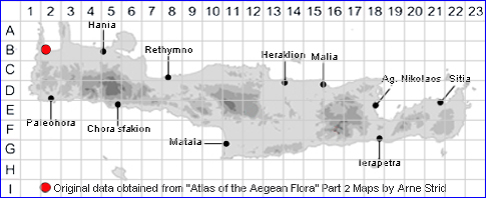
ARCTOTHECA CALENDULA
Family:- COMPOSITAE
Common Name:- Capeweed, Plain treasureflower, Cape dandelion, or Cape
marigold.
Synonym:- Arctotis calendula, Cryptostemma calendulaceum
Meaning:- Arctotheca (Gr) Covered with bear-like hairs.
Calendula (L) First-day-of-the-month.
General description:- Rosette-forming annual with a taproot.
Stems:-
1) Up to 40cm, ± scapose.
Leaves:-
1) 7-20 cm, lyrate-pinnatisect, scabrid-pubescent above, tomentose beneath.
Flowers:-
1) Capitula solitary. 2-6 cm diam.
2) Outer phyllaries, herbaceous, with a small, pinnatisect, ± recurved appendage.
3) Ligules,15-20 mm, pale yellow above (sometimes darker in the lower third),
purplish beneath.
Fruit:-
1) Achenes (2-2.5 mm long) lanate.
2) Pappus a row of 4~8 short scales.
Habitat:- Roadsides, waste areas, bare ground, disturbed sites and natural areas.
Distribution:- Widespread throughout the Mediterranean. Introduced to Crete not
common.
Flowering time:- Dec-Feb
Photos by:- Fotis Samaritakis
Comments
Arctotheca calendula is regarded as an environmental weed in Australia, its country
of origin. Though it is widely known as a very common weed of habitation (i.e.
gardens and lawns) and agricultural areas (i.e. crops and pastures) in temperate
Australia, it is also increasingly becoming a problem in natural areas (particularly in
coastal environs and in semi-arid and arid regions).
SPECIES DESCRIPTION
